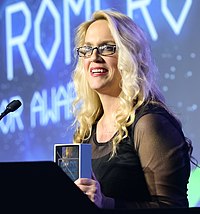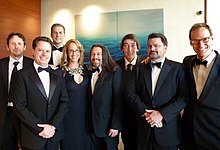Brenda Romero | |
|---|---|
 Romero at 2015 IGF Awards-GDCA | |
| Born | Brenda Louise Garno (1966-10-12) October 12, 1966 (age 57) Ogdensburg, New York, United States |
| Other names | Brenda Brathwaite |
| Occupation | Video game designer |
| Known for | Wizardry 8 |
| Spouses |
|
| Children | 3 |
Brenda Louise Romero (née Garno; born October 12, 1966), previously known as Brenda Brathwaite, is an American game designer and developer in the video game industry. She was born in Ogdensburg, New York and is a graduate of Clarkson University. Romero is best known for her work on the Wizardry series of role-playing video games and, more recently, the non-digital series The Mechanic is the Message. She has worked in game development since 1981 and has credits on 49 [self-published source] game titles.
For Wizardry, Romero provided game design, level design, system design, writing and scripting. She also wrote the manuals and documentation for some products in the series. Romero provided writing and documentation for the award-winning Jagged Alliance series. She was the lead designer for Playboy: The Mansion and Dungeons & Dragons: Heroes.
